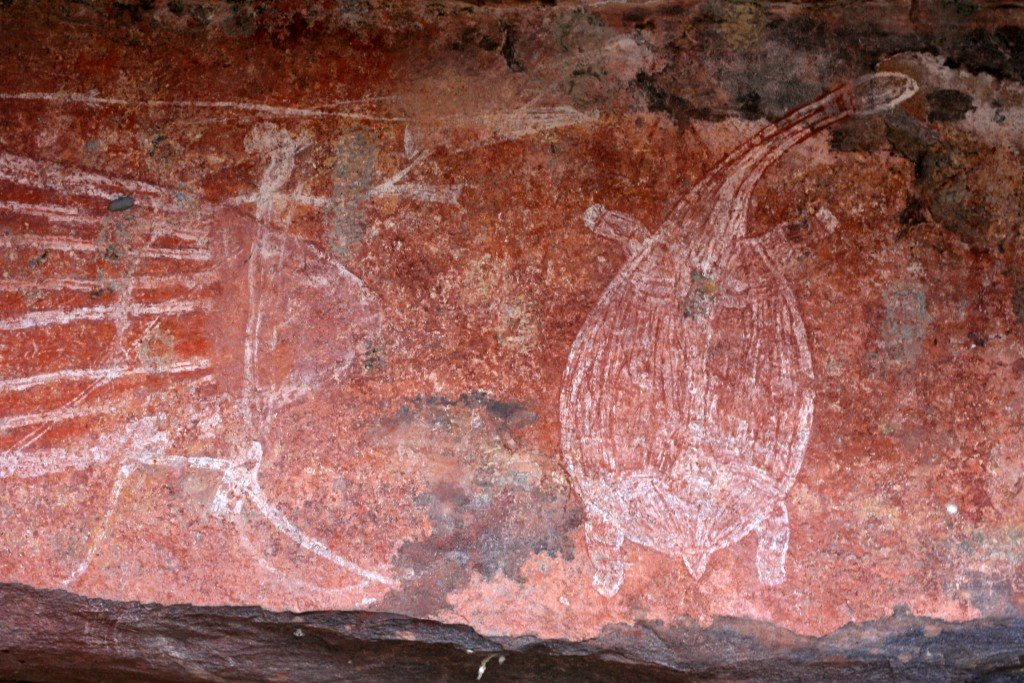Deep within the heart of Australia’s Northern Territory, the Ubirr rock art stands as an ancient testament to the enduring legacy of Aboriginal culture. A day trip from Darwin to Kakadu National Park unveils the mystery and beauty of these art pieces that have stood the test of time. Ubirr’s rock art provides not only a window into the distant past but also narrates stories and laws that are foundational to the indigenous people. Nestled along the rugged escarpments, this significant site beckons historians, art enthusiasts, and travelers to explore and interpret the powerful visual narratives ensconced in stone.
The Historical Tapestry of Ubirr

The heritage of Ubirr rock art is inseparable from the Aboriginal people who have inhabited the region for tens of thousands of years. Their intimate connection with the land is vibrantly expressed through the myriad of paintings adorning the rock surfaces. The span of time these pieces cover is extensive, offering viewers a glimpse from the distant past to more recent history. By deciphering the layers of artwork, one can unravel the evolution of artistic expression which outlines the daily life, spiritual practices, and significant events of the indigenous communities. As silent witnesses to history, these ancient canvases recount a rich narrative that continues to captivate cultural scholars today.
Exploring the Artwork of Ubirr
The remarkable ubiquity of the Ubirr rock art can be appreciated through its diverse range of subjects and styles. Among the various depictions, you’ll find detailed images of the local fauna, including barramundi, wallabies, and countless species distinctive to the Northern Territory. These artworks offer valuable insights into the diets, societal structure, and the deeply rooted connection between the Aboriginal people and their environment. Notably, the rock art of Ubirr also delves into the spiritual realm, detailing mythological beings and ancestral spirits known as ‘Mimi’ who are said to inhabit the rocky escarpments.
The X-ray Art Style
A defining feature of the Ubirr rock canvases is the unique ‘X-ray’ art style, allowing a deeper understanding of the complex relationship between the physical and spiritual world as perceived by the artists. This style is characterized by detailed representations of animals where the internal organs and bone structures are clearly visible. These X-ray art pieces serve as an educational tool, as much as an artistic one, revealing how the Aboriginal people possessed intricate knowledge of the anatomy and habits of their natural food sources.
Conservation and Cultural Respect
As a vital part of Australia’s heritage, it is crucial to ensure the ongoing conservation and protection of Ubirr’s ancient artworks. Initiatives have been undertaken to preserve these cultural treasures against the effects of time and human interference. Visitors to Ubirr are expected to demonstrate the highest degree of respect, complying with guidelines set to protect the integrity of this sacred space. Integral to these efforts are the traditional landowners and custodians, who play a pivotal role in the maintenance and interpretation of these historic sites, passing down the wisdom and cultural significance through generations.
Visiting Ubirr: What You Need to Know
To fully appreciate the Ubirr rock art, planning your visit is essential. Timing can greatly impact your experience—the dry season offers clearer paths and typically better conditions for exploring. Knowledgeable local guides can enhance your visit, imparting the traditional stories and cultural context behind each art piece. For a responsible visit, it is important to acquaint yourself with the park’s regulations. This ensures not only your safety but also the preservation of the park’s cultural wealth for future generations to enjoy.
Before you embark on your day trip from Darwin to Kakadu, consider the following points:
- Check the weather and park conditions to ensure pathways are accessible and safe.
- Plan your visit to coincide with less busy times, typically early in the morning or late afternoon, to experience the site in a more intimate setting.
Engaging with the Ubirr Experience
Visitors are encouraged to immerse themselves in the cultural tapestry of Ubirr by participating in guided tours. These tours are more than just sightseeing—they are a form of cultural engagement, offering intimate knowledge that goes beyond what meets the eye. In addition, educational materials and resources are available for those seeking to delve deeper into the significance of the rock art they are witnessing. Remember to capture the experience with your camera, but always in a manner that is respectful to the sanctity of this ancient gallery.
Ubirr’s Place in the World: Global Importance and Recognition
Ubirr’s contributions to the international understanding of rock art cannot be overstated. Its inclusion as part of Kakadu National Park’s UNESCO World Heritage listing emphasizes its paramount importance. The rock art stands as an informative and educational touchstone that spans generations and crosses cultural boundaries. It is not merely a national treasure but a world heritage that enriches the collective narrative of human civilization.
Conclusion
The enduring allure of Ubirr rock art reflects a universal human connection to storytelling, heritage, and artistic expression. As we continue to explore, preserve, and share the narratives depicted on these ancient canvases, we contribute to the enduring tapestry that is intrinsic to all cultures. Ubirr teaches us that art is not just for appreciation but is a vital thread in the fabric of our shared human history. It is our collective responsibility to support sustainable tourism practices that not only enhance knowledge but also ensure the preservation of these irreplaceable cultural insights for future generations.
FAQs About Ubirr Rock Art
What is the significance of Ubirr rock art?
The Ubirr rock art stands as a rich cultural heritage site, capturing the stories, beliefs, and ecological knowledge of the Aboriginal peoples of Australia. It serves as an invaluable historical record and a testament to the First Australians’ intricate and enduring relationship with the land.
How old are the paintings at Ubirr?
Some paintings at Ubirr date back approximately 20,000 years. The rock art contains layers that represent different historical periods, each telling its own story of the peoples and environments of times past.
Can visitors take photos of the Ubirr rock paintings?
Photography is generally permitted, but visitors should exercise respect by following the established guidelines and cultural protocols that are in place to protect this delicate site.
Do I need a guide to view the Ubirr rock art?
A guide is not necessarily required, but guided tours are highly recommended to gain a richer understanding of the cultural significance and historical context surrounding the rock art at Ubirr.
Are there any entry fees for visiting Ubirr in Kakadu National Park?
Entry to Kakadu National Park requires a valid park pass, which includes access to Ubirr. These fees help support conservation efforts and cultural preservation within the park.


